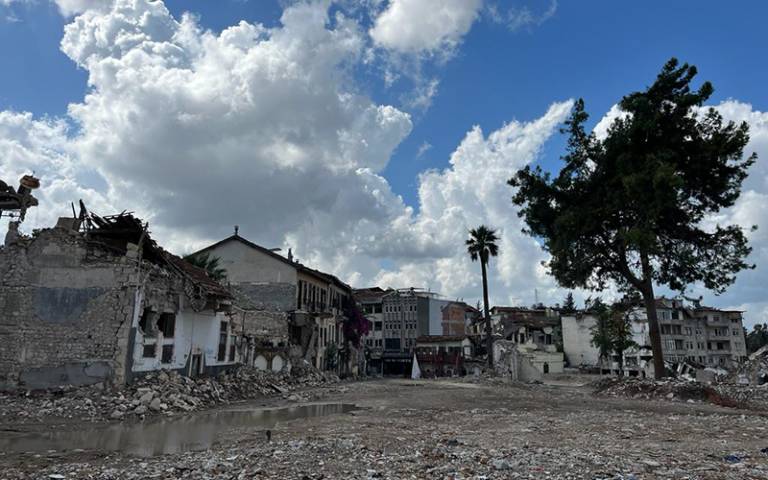Flaws in planning, design and construction processes that ignored established best practices were the root causes of most injuries and deaths in last year's Türkiye-Syria earthquakes, according to a new report by an international team, led by UCL and the University of Cambridge.

The independent report, based on investigations and analyses by the Earthquake Engineering Field Investigation Team (EEFIT), is published by the Institution of Structural Engineers. The authors concluded that a drive for profit led the construction industry to take shortcuts, leading to buildings primarily made of non-compliant reinforced concrete, which became the main cause of casualties.
On 6 February 2023, a large area in southeastern Türkiye and northern Syria was hit by two earthquakes of 7.8 and 7.5 Mw (moment magnitude). An estimated 50,000 people lost their lives, and approximately 100,000 more were injured. Damage costs have been estimated to be $84.1 billion for Türkiye alone.
Within one week of the earthquakes, EEFIT - a joint venture between industry and universities - gathered an interdisciplinary team of 30 experts from across the world to assess the damage and develop recommendations to help reduce future impacts and vulnerabilities. The team studied scientific and engineering data related to the earthquakes, including geotechnics, the structural and infrastructure impact, and the efficacy of relief, response, and recovery operations.
Their analysis revealed that despite established technical know-how, state-of-the-art building codes and rigorous building regulations in Türkiye, deficiencies were present among even the newest building stock.
This included the wide-scale use of reinforced concrete that was non-compliant with design codes, such as steel reinforcement not being detailed properly to provide sufficient strength under seismic loading, or buildings constructed taller than is allowed. Some concrete columns were also severed to open up space for ground floor commercial units, for example, compromising their seismic performance.
Dr Yasemin Aktas, EEFIT Team Leader from UCL Civil, Environmental & Geomatic Engineering, said: "Our analysis suggests that resilience to major seismic events such as earthquakes in Türkiye and Syria is not only a technical problem, but one of culture and governance. Engineers in these countries know how to build resilient structures and building regulations stipulate high standards that are simply not being met when buildings are being built."
The report recommends that a review of building stock and infrastructure is needed to better understand risk levels for future earthquakes, which would be facilitated by data being publicly available. It also recommended stricter enforcement ensuring buildings are up to code and abolishing the practice of giving amnesty to buildings that are non-compliant.
Professor Emily So, EEFIT Team Leader from the University of Cambridge, said: "The 2023 Türkiye and Syria earthquakes were truly tragic, hitting an already fragile population, including migrants. Our field work and remote analysis revealed many issues, including the issue of non-compliant buildings with little seismic resilience. Building code compliance needs to be strengthened."
Dr Aktas concluded: "Our aim with this report is to create strategies for good building practice, to instil resilience and learn lessons to help societies cope with major natural disasters. Solutions depend on a cross-discipline and multi-agency approach that involves engineers, policy and law makers, the wider construction industry, and regulators."






